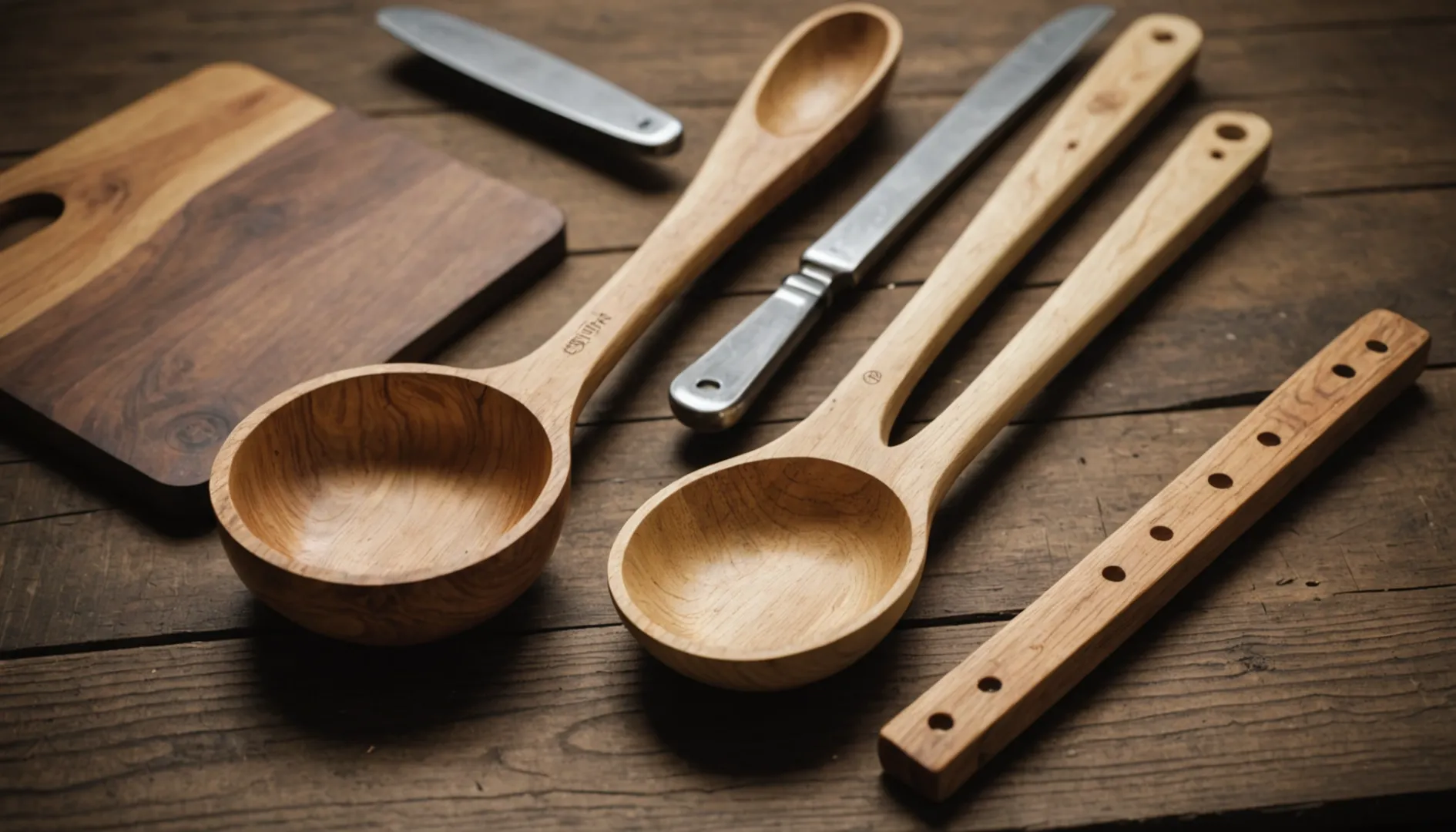
Choosing the right wood for your kitchen utensils is more than just a matter of aesthetics—it's about performance and longevity! But what really sets softwoods apart from hardwoods? Let's dive in.
Softwoods and hardwoods differ in density, durability, and grain structure, affecting their suitability for cutlery production. Hardwoods, like maple, are denser and more durable, making them ideal for long-lasting utensils. Softwoods, being lighter, are often used for cost-effective, disposable cutlery.
While hardwoods provide superior durability, softwoods offer economic advantages. However, there's much more to consider when selecting wooden cutlery. From hygiene to aesthetics, understanding these differences can help you make informed choices about your kitchenware.
Hardwoods are more durable than softwoods for cutlery.True
Hardwoods, like maple, have a denser structure, enhancing durability.
What Are the Benefits of Using Hardwoods in Kitchen Utensils?
Discover why hardwoods are a top choice for kitchen utensils, blending durability with natural beauty.
Hardwoods, like maple and oak, are preferred for kitchen utensils due to their durability, resistance to wear, and superior aesthetic appeal. These characteristics make them ideal for enduring kitchen use while maintaining a refined look.
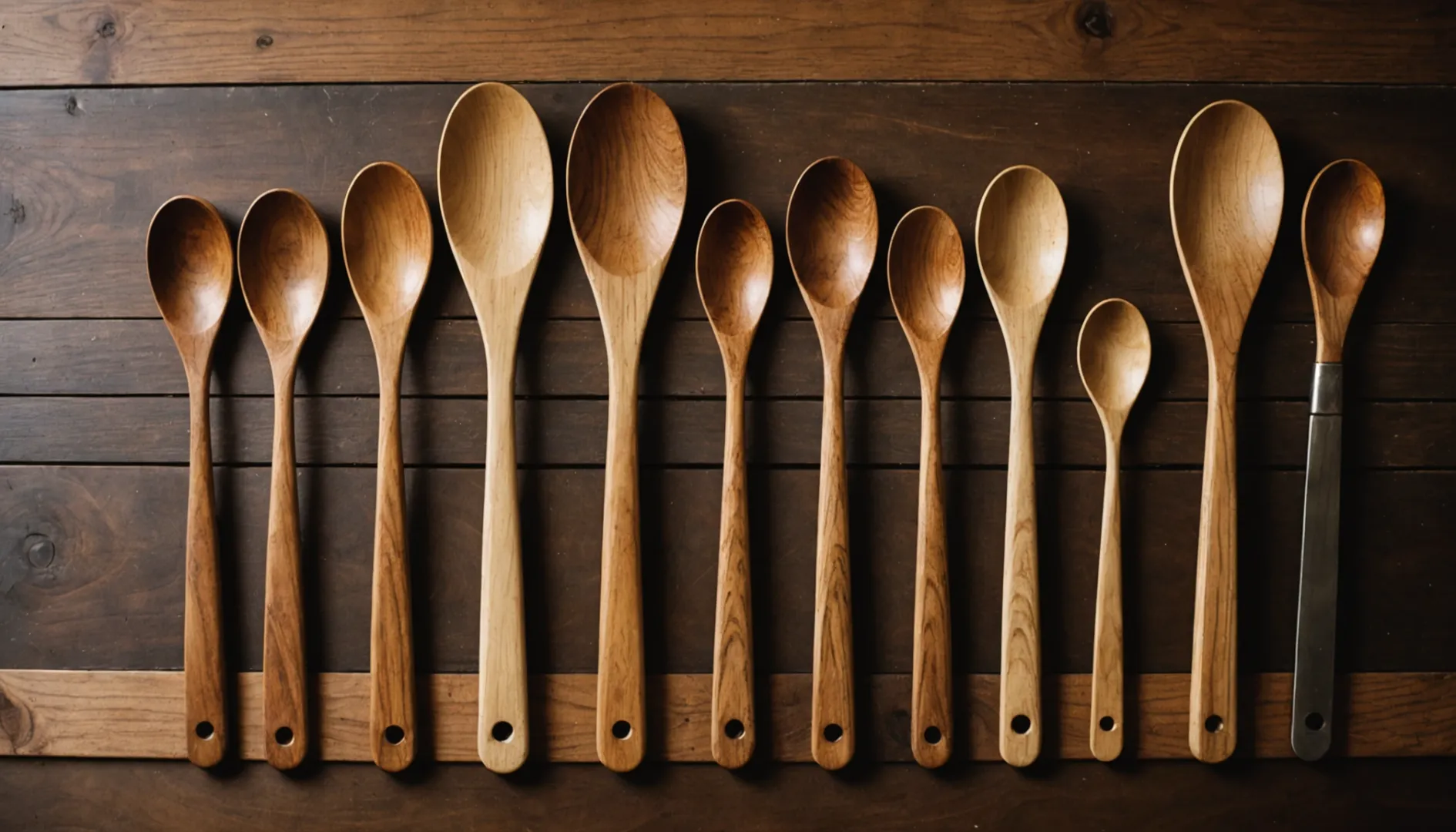
Durability and Longevity
One of the standout benefits of using hardwoods in kitchen utensils is their exceptional durability. Unlike softwoods, hardwoods have a denser cellular structure, providing greater resistance to wear and tear. This makes them particularly suited for high-use kitchen items like cutting boards, spoons, and spatulas, which require both strength and resilience.
For example, maple1 is renowned for its hardness and fine grain, which not only enhances its durability but also reduces the likelihood of the wood splintering or cracking over time. Similarly, oak offers excellent longevity due to its dense grain and natural resistance to moisture.
Aesthetic Appeal
Hardwoods are not only functional but also aesthetically pleasing. Their rich grains and natural hues add a touch of elegance and warmth to any kitchen setting. Species like walnut and cherry are especially prized for their deep colors and striking grain patterns, making them popular choices for premium kitchen utensils.
| Wood Type | Durability | Grain Pattern | Color |
|---|---|---|---|
| Maple | High | Fine | Light |
| Oak | Very High | Coarse | Medium to dark brown |
| Walnut | High | Rich | Dark brown to black |
This table highlights the aesthetic and practical benefits of different hardwood types often used in kitchen utensils.
Hygienic Properties
While wood's porosity might seem a disadvantage, hardwoods generally offer better resistance to bacteria than softer woods. The tight grain of hardwoods helps minimize moisture absorption and bacterial growth when compared to more porous alternatives. When treated with food-safe oils or waxes, hardwood utensils become even more resistant to water and stains.
Environmental Considerations
Using hardwoods in kitchen utensils also aligns with environmental sustainability goals. Hardwoods like beech or ash are often sourced from responsibly managed forests, supporting sustainable forestry practices. Furthermore, hardwood utensils are typically biodegradable and can be composted at the end of their life cycle.
In conclusion, hardwoods offer a blend of durability, beauty, and eco-friendliness that makes them an excellent choice for kitchen utensils. By understanding the unique properties of various hardwoods, you can select utensils that best fit your needs while enjoying their long-lasting benefits.
Hardwoods are more durable than softwoods for utensils.True
Hardwoods have denser cellular structures, enhancing durability.
Walnut is less durable than maple for kitchen tools.False
Both walnut and maple have high durability but different aesthetics.
How Does the Porosity of Wood Affect Cutlery Hygiene?
Wooden cutlery is a sustainable choice, but its porous nature can pose hygiene challenges. How does porosity impact safety and cleanliness?
The porosity of wood allows it to absorb moisture and bacteria, potentially compromising cutlery hygiene. Proper treatment with natural coatings, such as oils or waxes, can mitigate these risks by creating a protective barrier that reduces bacterial absorption.
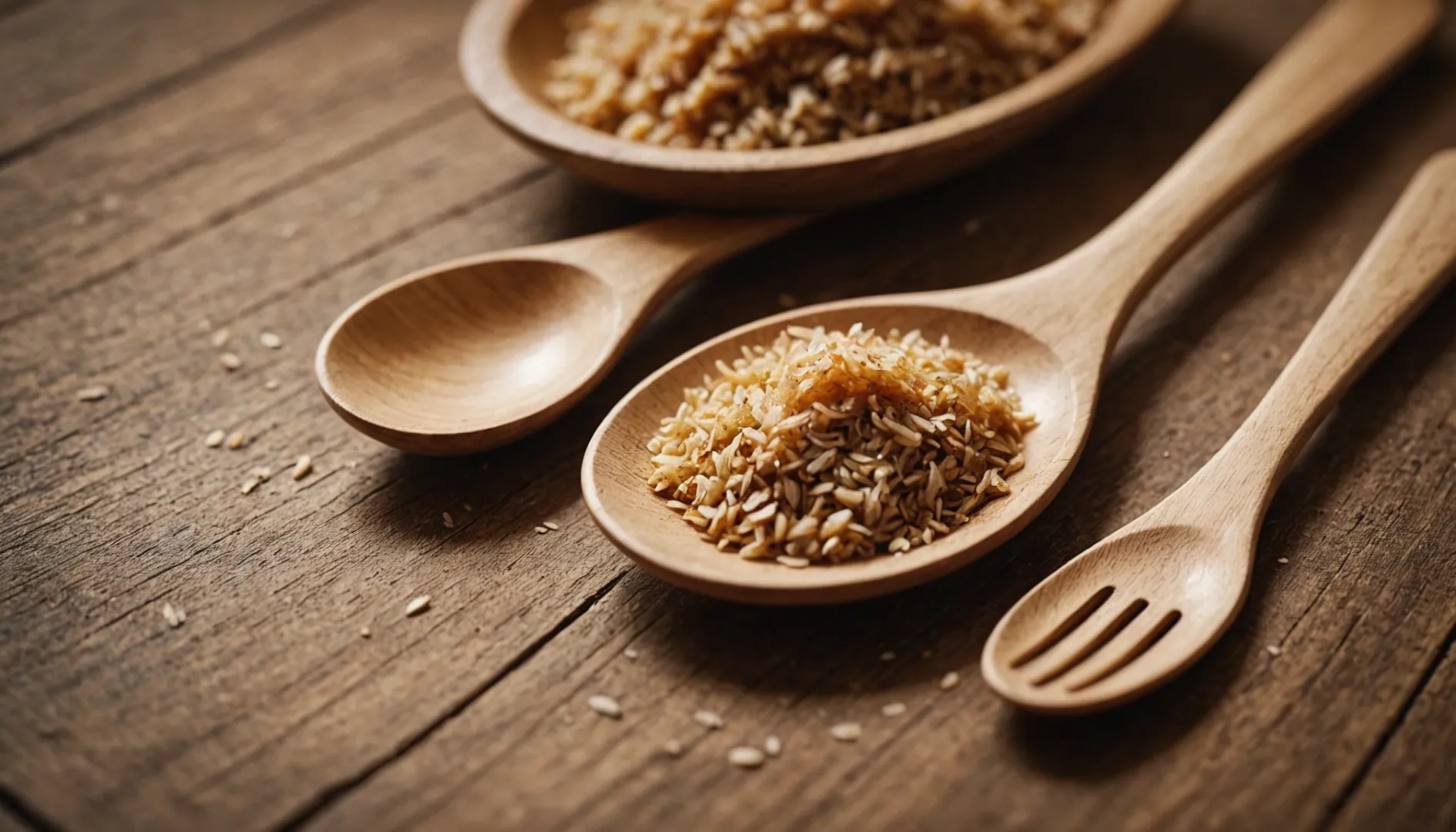
Understanding Wood Porosity
Wood is naturally porous, meaning it has tiny spaces or pores that can absorb moisture and other substances. This property can be both a strength and a weakness. In the context of cutlery, the porosity of wood becomes a critical factor in determining how well the utensils can be maintained hygienically.
Porous wood can absorb moisture and bacteria2, potentially leading to hygiene issues if not properly treated or maintained. This absorption can occur when utensils are left damp or not cleaned adequately after use. Over time, this can lead to the growth of bacteria within the wood itself, making it unsafe for use with food.
Natural Coatings as a Solution
Manufacturers often apply natural coatings like beeswax or plant oils to wooden cutlery to combat the adverse effects of porosity. These coatings create a smooth surface that acts as a barrier to moisture and bacteria. For instance, an oil-treated surface can significantly reduce the water uptake by sealing the pores, thereby enhancing the utensil's hygienic properties3.
However, it's important to note that these treatments are not permanent. The coatings can wear off over time, especially with regular washing and use. Therefore, periodic reapplication of oils or waxes is recommended to maintain the protective layer.
| Treatment Type | Frequency | Benefits |
|---|---|---|
| Beeswax | Monthly | Enhances durability and water resistance |
| Plant Oils | Bi-weekly | Provides a smooth finish and reduces porosity |
The Role of Proper Maintenance
Proper maintenance is crucial in ensuring the longevity and hygiene of wooden cutlery. This includes regular cleaning with mild soap and warm water, ensuring that the utensils are thoroughly dried after washing. Avoiding prolonged exposure to water and high heat is also vital.
Moreover, storing wooden cutlery in a dry place prevents moisture buildup that could exacerbate porosity-related issues. Implementing these maintenance practices can significantly extend the life of wooden utensils while keeping them safe for culinary use.
Wooden cutlery absorbs moisture and bacteria easily.True
Wood's porous nature allows it to absorb moisture and bacteria.
Natural coatings on wood eliminate porosity issues permanently.False
Coatings reduce porosity effects but require regular reapplication.
Are There Environmental Benefits to Choosing Wooden Cutlery?
Wooden cutlery is gaining traction as an eco-friendly alternative to plastic. But how does it truly benefit the environment?
Yes, choosing wooden cutlery offers significant environmental benefits due to its biodegradable nature, sustainable sourcing, and minimal waste production. Unlike plastic, wooden utensils decompose quickly and can be composted, reducing landfill waste. Responsible forestry practices and natural coatings enhance its eco-friendliness.
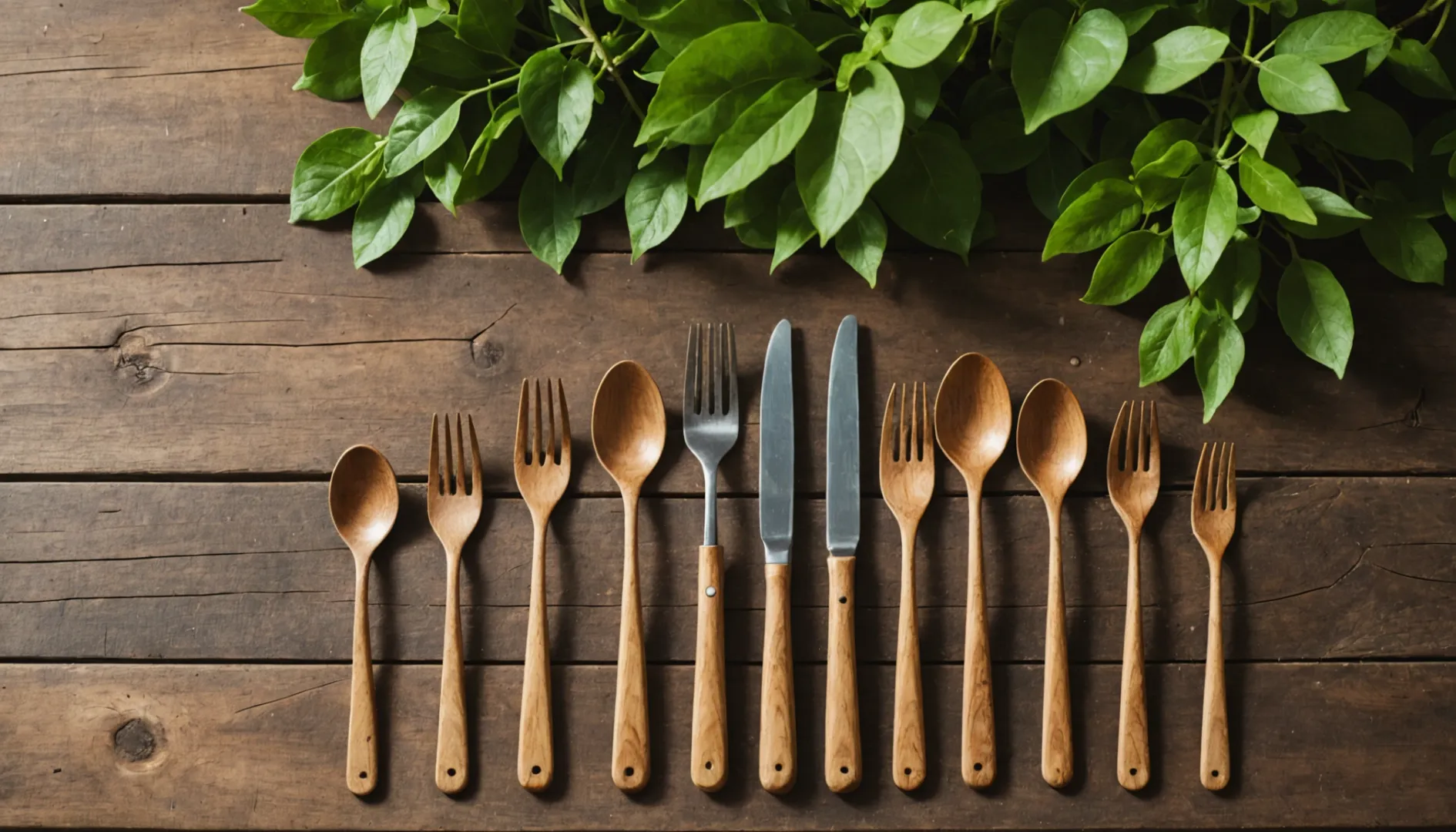
Biodegradability and Compostability
One of the primary environmental benefits of wooden cutlery is its biodegradability4. Unlike plastic utensils that can take centuries to decompose, wooden cutlery breaks down naturally in a matter of months, depending on the conditions. This rapid decomposition not only reduces the burden on landfills but also allows for composting, transforming waste into nutrient-rich soil.
Sustainable Sourcing
The sustainability of wooden cutlery largely hinges on responsible sourcing. When manufacturers choose wood from responsibly managed forests, it ensures that the environmental impact is minimized. Certifications such as FSC (Forest Stewardship Council) confirm that the wood comes from forests managed with respect to biodiversity and ecosystem integrity. This responsible sourcing5 practice helps maintain forest health while providing a renewable resource for cutlery production.
Natural and Non-Toxic Coatings
To enhance durability and hygiene, wooden cutlery often receives coatings of beeswax or plant oils. These natural coatings6 provide a protective layer that resists moisture and bacterial absorption. Unlike some chemical treatments used on other materials, these coatings are non-toxic and eco-friendly, ensuring that the utensils remain safe for both users and the environment.
Minimal Waste Production
Wooden cutlery generates minimal waste compared to plastic. The production process involves less energy consumption and produces fewer by-products. Furthermore, any waste generated can often be recycled or composted. This reduction in waste contributes to a smaller carbon footprint, aligning with global efforts to combat climate change.
Innovations in Design and Material Use
Recent innovations focus on resource efficiency, such as minimizing material use without sacrificing durability. Some companies are incorporating bamboo fibers or exploring new materials that enhance strength and biodegradability. These innovations in design7 aim to maximize environmental benefits while meeting consumer demand for quality and performance.
Overall, choosing wooden cutlery represents a step towards more sustainable living. Its benefits extend beyond just replacing plastic; they encompass a holistic approach to reducing environmental impact through careful material selection, responsible manufacturing practices, and innovative product design.
Wooden cutlery is biodegradable within months.True
Wooden cutlery decomposes naturally in months, reducing landfill waste.
Plastic cutlery decomposes faster than wooden cutlery.False
Plastic takes centuries to decompose, unlike wooden cutlery which biodegrades quickly.
What Maintenance is Required for Long-Lasting Wooden Utensils?
Proper maintenance of wooden utensils ensures their durability and hygiene, making them a sustainable kitchen choice.
Regular oiling, hand washing with mild soap, and avoiding moisture are key to maintaining wooden utensils. Reconditioning with natural oils preserves their finish, preventing cracks and bacterial growth. Proper drying and storage further extend their lifespan.
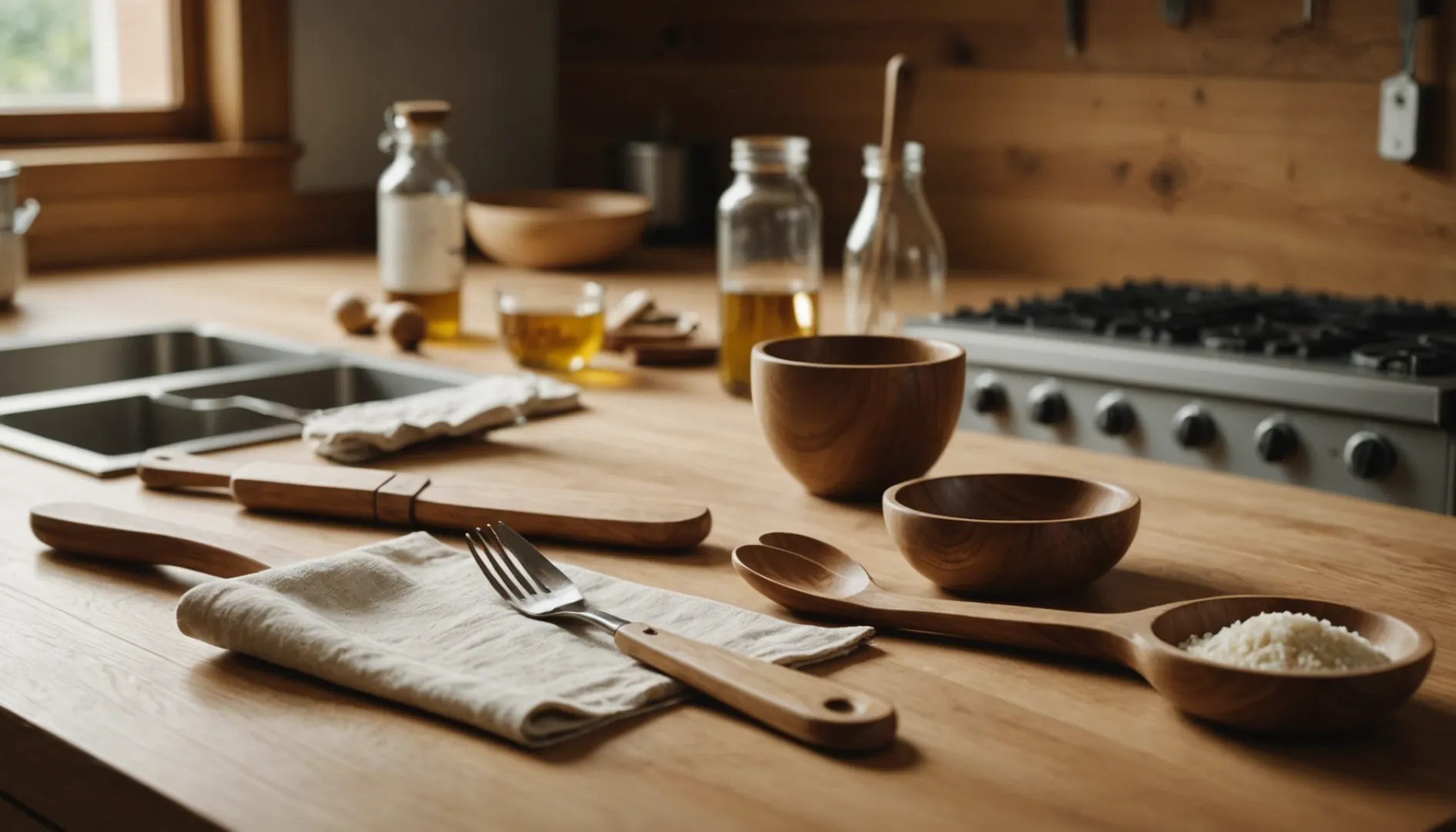
Understanding the Basics of Wooden Utensil Care
Wooden utensils, while eco-friendly and aesthetically pleasing, require specific care to maintain their functionality and appearance. Unlike metal or plastic, wood is porous and susceptible to water damage and bacterial growth. Therefore, understanding the nuances of wooden utensil maintenance is essential for their longevity.
The Importance of Regular Oiling
One of the most crucial aspects of maintaining wooden utensils is regular oiling. Natural oils like mineral oil or beeswax are commonly used to coat wooden surfaces, protecting them from moisture and enhancing their natural beauty. The oils fill the wood's pores, creating a barrier against water and bacteria. To apply, simply rub the oil into the utensil's surface with a soft cloth until fully absorbed.
- Frequency: For frequently used utensils, oiling should be done monthly or whenever the wood appears dry.
- Benefits: Regular oiling prevents cracking and warping, keeping the utensils smooth and functional.
Cleaning Techniques for Longevity
Wooden utensils should always be washed by hand using mild soap and warm water. Avoid soaking them in water as this can lead to swelling and cracking. After washing, immediately pat them dry with a clean cloth.
- Dos: Wash with mild soap; rinse thoroughly; dry immediately.
- Don'ts: Do not place in dishwasher; avoid prolonged soaking.
Protecting Against Bacterial Growth
Due to their porous nature, wooden utensils can harbor bacteria if not properly cared for. Regular cleaning and oiling help mitigate this risk. Additionally, occasional sanitizing with a vinegar solution can further ensure hygiene without damaging the wood.
- Sanitizing Solution: Mix one part vinegar with four parts water for an effective natural cleaner.
Storage Tips to Prevent Damage
Proper storage is another critical factor in prolonging the life of wooden utensils. Keep them in a dry environment away from heat sources. Hanging them up or placing them in a utensil holder allows for proper air circulation.
- Ideal Storage Conditions: Cool, dry places; avoid direct sunlight and heat.
Signs Your Wooden Utensils Need Attention
Even with diligent care, wooden utensils may show signs of wear over time. Look out for dryness, rough surfaces, or any discoloration. These indicate it's time for a thorough clean or re-oiling session.
By following these maintenance steps, you can ensure that your wooden utensils8 remain a lasting part of your kitchen arsenal, combining both functionality and sustainability.
Wooden utensils should be oiled monthly.True
Regular oiling prevents cracking and maintains the utensil's integrity.
Wooden utensils are dishwasher safe.False
Dishwashers can cause wooden utensils to swell and crack.
Conclusion
Hardwoods blend durability with beauty while being eco-friendly. By understanding the unique properties of each wood type, you can select utensils that fit your needs and contribute positively to the environment.
-
Explore why maple is ideal for durable kitchen tools.: Naturally light in color, Maple is the choice for light finishes. The grade known as White Maple, when finished with shellac alone or with beeswax, makes a ... ↩
-
Explore how porosity influences bacteria absorption in wood cutlery.: Wood is intrinsically porous, which allows organic debris and bacteria to descend into the pores of wood unless a highly hydrophobic residue covers the surface ... ↩
-
Learn how oil coatings enhance hygiene and durability of wooden utensils.: Oiling and conditioning wooden spoons and cutting boards is key to preventing cracking and splintering. We tested five popular products and ... ↩
-
Understand how quickly wooden utensils decompose compared to plastic.: Wood is totally natural, so it's fully biodegradable and quick to break down. On the flip side, every single plastic utensil that's ever been manufactured ... ↩
-
Learn about certifications ensuring responsible forest management.: FSC certification ensures that products come from responsibly managed forests that provide environmental, social and economic benefits. ↩
-
Discover eco-friendly treatments enhancing durability and safety.: Milk has a kind of protein called casein that forms a sort of plastic coating. Make sure you're using skimmed milk, as it's the milk fats which ... ↩
-
Explore new materials and designs improving sustainability.: The new wooden spoons, forks and knives feature a ridge in the handle for a stronger grip and extra durability. The utensils have CMA-S ( ... ↩
-
Explore comprehensive care tips for maintaining wooden kitchenware.: Most wooden spoons, utensils and cutting boards are treated with mineral oils, which creates an inert, neutral surface that will not allow bacteria to reside. ↩

